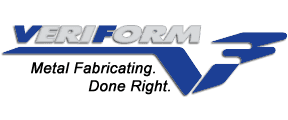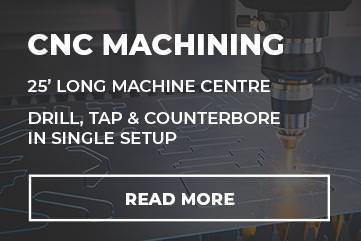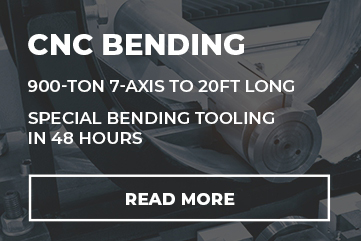News
When Was Laser Welding Invented?
Exploring the History with Veriform’s Metal Fabrication Experts

Laser welding, a cornerstone technology in the fields of metal fabrication and welding, represents a pinnacle of precision engineering and innovation. Its inception marks a significant leap forward in manufacturing capabilities, offering unmatched precision, efficiency, and flexibility. As a leader in specialized welding and metal fabrication services, Veriform delves into the origins of laser welding to shed light on its revolutionary impact on the industry.
The Dawn of Laser Welding
Laser welding was invented in the 1960s, shortly after the first working laser was introduced by Theodore H. Maiman in 1960. This groundbreaking discovery set the stage for a new era in manufacturing technologies. The development of laser welding technology was driven by the growing need for precise, high-quality welding methods that could meet the demands of rapidly advancing industries such as aerospace, automotive, and electronics.
The Evolution of Laser Technology
The first lasers used for welding were ruby lasers, characterized by their ability to produce intense, focused beams of light. However, the quest for more efficient and practical welding solutions led to the development of gas lasers, such as the carbon dioxide (CO2) laser in the mid-1960s, which offered greater power and efficiency for industrial applications. This was followed by the introduction of the neodymium-doped yttrium aluminum garnet (Nd:YAG) laser, which further expanded the possibilities for laser welding with its ability to be transmitted through optical fibers, allowing for greater flexibility and control in welding operations.
The Impact on Metal Fabrication and Welding
The invention of laser welding technology revolutionized the metal fabrication and welding industry. It introduced a level of precision and control previously unattainable with traditional welding methods. The key benefits of laser welding include:
- High Precision and Accuracy: Laser welding provides unparalleled precision, making it ideal for intricate and detailed welding tasks.
- Minimal Heat Input: The focused nature of the laser beam minimizes heat input, reducing distortion and the heat-affected zone (HAZ) in the welded materials.
- Versatility: Laser welding can be applied to a wide range of materials, including metals that are challenging to weld using conventional methods.
- Increased Efficiency: The speed and efficiency of laser welding have significantly improved production times and reduced costs in manufacturing processes.
Veriform’s Integration of Laser Welding
At Veriform, the integration of laser welding technology into our metal fabrication and welding services underscores our commitment to innovation and excellence. By harnessing the capabilities of laser welding, we are able to offer our clients superior quality, precision, and efficiency in their projects. Our expertise in laser welding allows us to tackle complex welding challenges, ensuring that we meet the stringent requirements of industries where precision and reliability are paramount.
Looking Ahead: The Future of Laser Welding
As we look to the future, the potential for laser welding continues to expand with advancements in laser technology and materials science. The ongoing development of fiber lasers and the exploration of new laser mediums promise even greater efficiency, control, and application possibilities. Veriform remains at the forefront of these technological advancements, continually exploring new ways to leverage laser welding technology to enhance our metal fabrication and welding capabilities.
Conclusion
The invention of laser welding in the 1960s marked a turning point in the field of metal fabrication and welding, offering a new dimension of precision and efficiency. Today, Veriform proudly continues the tradition of innovation that laser welding represents, delivering state-of-the-art welding solutions to our clients. As we embrace the future of manufacturing, our commitment to excellence and innovation ensures that we remain leaders in the industry, pushing the boundaries of what’s possible in metal fabrication and welding.
For more information on how Veriform’s advanced laser welding capabilities can benefit your next project, visit us today. Together, we can achieve the precision, efficiency, and quality your projects demand.








